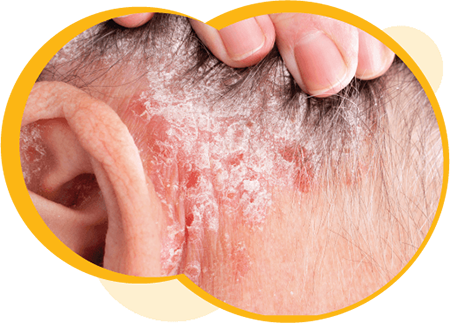 Psoriatic arthritis is both an autoimmune disease and a form of inflammatory arthritis. The immune systems of people with psoriatic arthritis attack the joints, in addition to the skin. This can cause the joints to swell and become red and inflamed (warm to touch). It may also cause back and neck pain.
Psoriatic arthritis is both an autoimmune disease and a form of inflammatory arthritis. The immune systems of people with psoriatic arthritis attack the joints, in addition to the skin. This can cause the joints to swell and become red and inflamed (warm to touch). It may also cause back and neck pain.
In most people, psoriatic arthritis starts after the onset of psoriasis, but having psoriasis does not always mean you will have psoriatic arthritis. In fact, most people with psoriasis will never develop psoriatic arthritis. Up to a third (approximately 30%) of people with psoriasis will develop psoriatic arthritis in their lifetime and symptoms will usually begin slowly, spreading to other joints over a few weeks to a few months. Less commonly, it can develop quickly and be severe.
Psoriatic arthritis is an unusual type of arthritis because it can look very different from person to person, and sometimes symptoms of arthritis may not develop until ten or more years after developing psoriasis.
Additional risk factors and genetic links associated with a greater chance of developing psoriatic arthritis are explored below.
What are the risk factors for psoriatic arthritis?
No one completely knows what causes psoriatic arthritis, but genetics play a big role. If someone in your family has psoriasis or psoriatic arthritis, there is a greater chance that you could develop it.
What are the symptoms or possible early signs of psoriatic arthritis?
How is psoriatic arthritis diagnosed?
 There is no single test for psoriatic arthritis. However, if you have joint pain and stiffness together with psoriasis in your skin and/or nails, you may have psoriatic arthritis.
There is no single test for psoriatic arthritis. However, if you have joint pain and stiffness together with psoriasis in your skin and/or nails, you may have psoriatic arthritis.
The symptoms of psoriatic arthritis can be similar to other forms of inflammatory arthritis. To rule out other forms of arthritis, your doctor will use a physical examination, blood tests and X-rays or other forms of imaging such as ultrasound or MRI to help confirm a diagnosis. Sometimes psoriatic arthritis starts after an injury to a joint and can be misdiagnosed.
While there is currently no cure for psoriatic arthritis, making the right diagnosis is very important because there are many treatment options to manage the symptoms of psoriatic arthritis and its progression.
How common is psoriatic arthritis?
About 0.2% of adults living in Canada have psoriatic arthritis, but the exact numbers are unknown.
-
Psoriatic arthritis is diagnosed in about 30% of patients attending psoriasis clinics.
-
Psoriatic arthritis is also detected in about 15% of people with psoriasis seen by a family doctor.
-
Psoriatic arthritis can develop at any age.
-
Symptoms often develop after a “trigger” event.
A trigger event could be an unexpected source of stress, a viral infection, injury, or environmental cause. There may also be more than one trigger acting at one time that causes symptoms to first appear.

Discover More

This information was last updated January 2024, with expert advice from:
Vinod Chandran, MB BS MD DM PhD
Associate Professor of Medicine, Division of Rheumatology, University of Toronto
Staff Physician, Division of Rheumatology, University Health Network